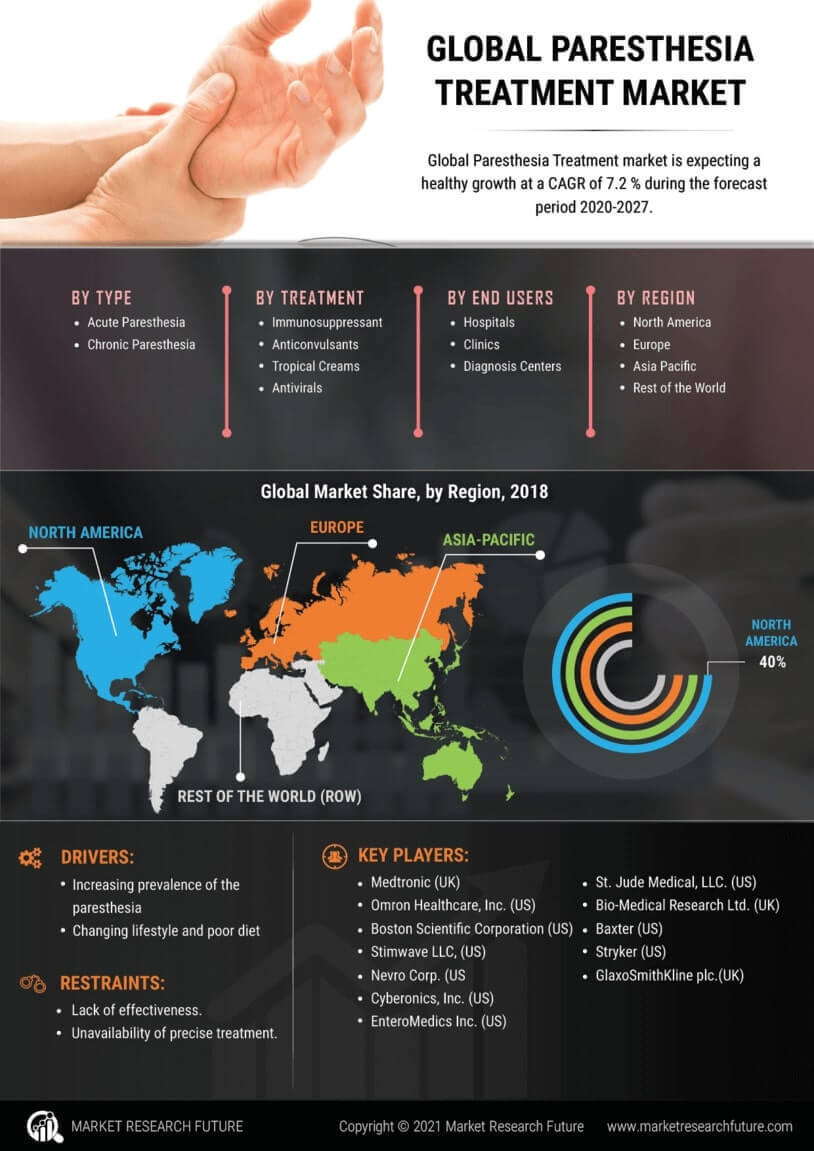Market Growth Projections
The Global Paresthesia Treatment Market Industry is poised for substantial growth, with projections indicating a market value of 6.42 USD Billion in 2024 and an anticipated increase to 12.3 USD Billion by 2035. This growth trajectory reflects a compound annual growth rate (CAGR) of 6.08% from 2025 to 2035, driven by various factors including technological advancements, increasing prevalence of neurological disorders, and a growing geriatric population. The market dynamics suggest a robust demand for innovative treatment solutions, highlighting the importance of ongoing research and development in this field.
Growing Geriatric Population
The increasing geriatric population globally is a crucial factor propelling the Global Paresthesia Treatment Market Industry. Older adults are more susceptible to conditions that cause paresthesia, such as peripheral neuropathy and stroke. As the global population aged 65 and older continues to rise, the demand for effective treatment options is likely to escalate. This demographic shift suggests that healthcare systems will need to adapt to meet the needs of this population. The market is expected to grow at a CAGR of 6.08% from 2025 to 2035, indicating a sustained demand for therapies addressing paresthesia in the aging demographic.
Enhanced Regulatory Frameworks
The establishment of enhanced regulatory frameworks for medical treatments is positively impacting the Global Paresthesia Treatment Market Industry. Regulatory bodies are increasingly focused on ensuring the safety and efficacy of new therapies, which fosters innovation and instills confidence in both healthcare providers and patients. Streamlined approval processes for new treatments may lead to quicker market entry for novel therapies, thereby expanding treatment options available to patients. This regulatory support is crucial in a market projected to reach 12.3 USD Billion by 2035, as it encourages investment in research and development for effective paresthesia treatments.
Rising Awareness and Education
Increased awareness and education regarding neurological health are driving the Global Paresthesia Treatment Market Industry. Campaigns aimed at educating the public about the symptoms and implications of paresthesia are fostering a more informed patient base. This heightened awareness encourages individuals to seek medical advice sooner, leading to earlier diagnosis and treatment. Healthcare providers are also focusing on training and resources to better equip themselves in managing these conditions. As a result, the market is likely to experience growth as more patients are diagnosed and treated effectively, contributing to an overall improvement in health outcomes.
Advancements in Medical Technology
Technological advancements in medical devices and treatment methodologies are significantly influencing the Global Paresthesia Treatment Market Industry. Innovations such as neuromodulation devices and advanced pharmacological therapies are enhancing treatment efficacy and patient outcomes. These developments not only improve the quality of life for patients but also drive market growth. As the industry evolves, the integration of artificial intelligence and telemedicine into treatment protocols may further streamline patient management. The anticipated growth trajectory, with a projected market value of 12.3 USD Billion by 2035, underscores the potential of technology to reshape the treatment landscape for paresthesia.
Increasing Prevalence of Neurological Disorders
The rising incidence of neurological disorders, such as multiple sclerosis and diabetic neuropathy, is a primary driver of the Global Paresthesia Treatment Market Industry. As these conditions become more prevalent, the demand for effective treatments is expected to surge. In 2024, the market is projected to reach 6.42 USD Billion, reflecting the urgent need for innovative therapies. The growing awareness of neurological health and the importance of early intervention may further contribute to market expansion. This trend indicates that healthcare providers are increasingly prioritizing the management of neurological disorders, thereby enhancing the overall treatment landscape.

















Leave a Comment